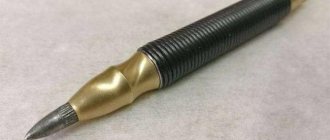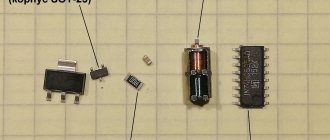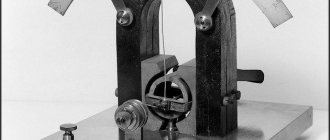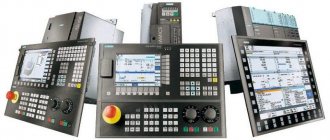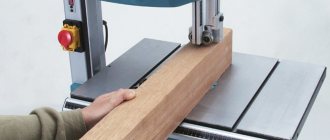Spread the love
A ball screw, like a lead screw, converts rotary motion into linear motion. The device consists of a threaded shaft and a ball nut. The latter device rides on a screw supported by a series of ball bearings that provide a rolling surface rather than a sliding surface for the lead screw. The balls roll between the nut and the shaft. Since there is no sliding, ball screws operate more efficiently than lead screws. This is their big advantage. The efficiency of ball screws is relatively constant and is usually better than 90%.
Ball screws are often the first choice for linear motion solutions, particularly on CNC machines, as the use of recirculating ball bearings provides high efficiency, load capacity and positioning accuracy. In addition, ball screws typically provide equal or better load capacity than leadscrews and are therefore a better choice when load requirements exceed the leadscrew's capabilities.
One of the disadvantages of ball screws is that they require a high level of lubrication. Ball screws should always be properly lubricated with the correct formulation to prevent corrosion, reduce friction, ensure efficient operation and extend service life. Backlash, a small amount of play between several mechanical components, can be eliminated by preloading.
Ball screw characteristics
Several ball screw terms, such as chains, turns, pitch, pitch, and origin, are widely used—and misused—to quantify various aspects of ball screw assemblies. Although these terms are related, each has a unique meaning and implications for design and performance.
Turn pitch and thread pitch are related, but have different characteristics. The pitch of a turn is the linear distance traveled for each complete revolution of a screw, and the pitch is the distance between the threads of a screw. These terms are often used interchangeably, and for single-thread screws they are equivalent. However, for screws with multiple starts, they are not equal. Ball screws are typically available in average pitches of 0.200 to 0.500 in/rev, although fine helix products exist.
Considering the geometry of the screw assembly, it makes sense that as the pitch of the screw increases, the number of tracks inside the ball nut becomes smaller, so fewer balls carry the load. Although larger lead screws provide more stroke per revolution and higher speeds, their ability to provide high lifting capacity is compromised. In theory, the number of ball races could be increased by lengthening the ball nut, but manufacturing constraints and restrictions on ball nut length make this solution impractical.
Chains and turns are also related concepts. A ball chain is a closed chain of recirculating balls. "Revolutions" refers to the number of strokes the balls make around the auger shaft before recirculating. The ratio of chains to turns is affected by the recirculation method. Ball return, using a baffle or thread-to-thread method, recirculates each turn of balls individually. Therefore, the number of turns is equal to the number of circuits.
When the beads are returned through an internal channel or outer tube, the recirculating beads may cross multiple threads, so one chain may have multiple bead turns. That is, the balls make several trips around the auger shaft before being recirculated. Multi-start ball screw assemblies typically use the internal channel recirculation method (pictured). They can be designed for multiple circuits by including more than one internal recirculation channel in the nut body.
Recirculation method with internal channel
HOW DOES A BALL SCREW WORK?
Ball screw assembly
The ball screw assembly consists of a screw and nut, each with corresponding helical grooves, and balls that roll between these grooves, providing the only contact between the nut and the screw. As the screw or nut rotates, the balls are deflected by the deflector into the nut's ball return system, and they pass through the return system to the opposite end of the ball nut along a continuous path. The balls then exit the ball return system into the ball screw raceways and nuts to be recirculated in a closed loop.
Ball nut assembly
The ball nut determines the load and life of the ball screw. The ratio of the number of threads in the ball nut outline to the number of threads in the ball screw determines how much sooner the ball nut will reach fatigue failure (wear) than the ball screw.
Ball nuts are manufactured with two types of ball return systems.
(a) External ball return system. In this type of return system, the ball is returned to the opposite end of the circuit through a ball return tube that extends above the outside diameter of the ball nut.
External ball return system
(b) Internal ball return system (there are several variations of this type of return system) The ball returns through or along the wall of the nut, but below the outer diameter.
Example (1): Some manufacturers have single-turn designs in which the balls are forced over the thread crest of the screw by a return system. This is known as a cross-baffle internal return system. In cross-baffle ball nuts, the balls make only one rotation of the shaft and the circuit is completed by the ball baffle (B) in the nut (C), allowing the ball to pass between adjacent grooves at points (A) and (D).
Single turn circuits
Example (2): Internal ball return system.
Internal ball return system
In this type of return system, the ball returns to the opposite end of the circuit through or along the wall of the nut, but below the outer diameter through a V-shaped cap.
Example (3): tangential internal ball return system.
Tangential system of internal return of the ball to the ball screw
For operation at high speeds or high loads, a tangential ball return system is used. This ensures a very smooth flow of balls at any speed in confined spaces. This is a very durable ball return system that is also used in high load applications.
D. Rotating Ball Nut Assembly
When a long ball screw is rotated at high speed, it may begin to vibrate once the slenderness ratio reaches a natural harmonic for that shaft size. This is called critical speed and can greatly affect the life of the ball screw. Safe operating speed should not exceed 80% of the critical propeller speed.
However, some applications require longer shaft lengths and higher speeds. This is where the rotating ball nut comes in. As a rule, special ball screw systems are manufactured for this purpose.
Home Products HIWIN
Ball Screws
HIWIN
HIWIN ball screws feature high performance with relatively low wear. This is due to the design and surface treatment features of ball screws (ball screws). Ease and speed of movement in transmission is achieved using rolling elements between the nut and the screw. The ball screw is used to convert the torque of the electric drive into translational movement of the actuator. HIWIN's ground and rolled ball screw gears are high quality material components manufactured with high precision in accordance with international ISO, JIS and DIN . HIWIN offers ground and rolled ball screws. High-precision, precision ground ball screws with thread application by grinding using abrasive of the FSV, FSW, FDV, FDW, FSI, FDI, RSI, RDI, PFDW, PFDI, OFSW, OFSI, FSH, DFSV, PFDW series with a diameter of 15 mm up to 100 mm and low-cost rolling (rolled) ball screws produced by HIWIN with thread application using a roller, FSI, FSC series with standard sizes from 8 to 63. Ball screws are used in robotics, in CNC machines: lathes, milling machines machine tools, grinding machines, equipment assembly lines. They allow you to use lower power equipment for startup, reduce production energy costs, reduce costs for downtime , repair and maintenance of equipment, and also increase the service life of equipment as a whole.
- General description Open PDF
- Ball screw drive production HIWIN It is distinguished by high quality, precision of movement and absence of backlash. This is achieved by a gothic raceway for the rolling elements and preload. Low friction in the ball screw gives mechanical efficiency up to 90%, and the attached an effort to rotate the nut, while making only 1/3, in comparison with the same type trapezoidal screw, the same standard size.
Details ›››
- Rolled ball screws have an accuracy class of C7 according to ISO, DIN (cumulative displacement error 0.052 mm over a length of 300 mm). Available from stock without finishing with flange nuts (DIN 69051) types FSI, FSC. It is possible to process the ends of ball screws according to customer drawings. Rolled ball screws are suitable for use in most tasks, mainly in budget solutions for CNC machines.
Details ›››
- Bearing supports are always necessary to fix ball screws relative to their axis and freely rotate the ball screw around its axis. Supports for ball screws are classified according to the method of mounting the ball screw - horizontal (support types - BK, BF), vertical (support types - FK, FF).
Details ›››
- The main advantages of the SUPER S series are low noise level (5~7dB lower than traditional series). The series adopts a patented return device design, which can absorb the noise caused by the impact of steel balls, which greatly reduces the noise intensity and improves the structural strength, reaching a Dm-N value of up to 220,000.
Details ›››
- The Super-T series of HIWIN ball screws is specially designed for high speed and silent motion. The optimal design of the ball rotation system reduces the noise level caused by the collision of balls during operation.
Details ›››
- Super-Z Series
Details ›››
- Ball screws with external ball recirculation are used in CNC machines, industrial equipment, electronic equipment, precision machines and other high-speed equipment.
Details ›››
- Ball screw with internal recirculation
Details ›››
- Ball screw with end recirculation
Details ›››
- Ball screw with lubricant cartridge
Details ›››
- Ball screws can be used in power cylinders, to replace hydraulic cylinders in presses, and in any other systems with extreme loads. Nuts in this series can withstand loads 2-3 times higher than nuts in standard ball screw series.
Details ›››
- The R1 series ball screw is a ball screw with a rotating nut. The transmission design included a nut and a radial bearing as a single system. The use of this type of ball screw is widespread in the semiconductor industry, in robotics, in the woodworking industry, in laser systems, and in transport equipment.
Details ›››
- Cool Type ball screws are HIWIN ball screws with a cooling system, designed for high-speed movements with high dynamic loads and precise positioning systems. Available with a hollow screw for added cooling.
Details ›››
- HIWIN Ball Spline Series Ball Screws
Details ›››
- HIWIN anti-dust ball screws are designed to prevent small particles, iron filings and other industrial debris from getting under the nut body.
Details ›››
- The HIWIN GN-400C gun (syringe) is used for filling and replenishing linear guide cartridges, ball screw nuts, bearing units, etc. with grease.
Details ›››
Rolled ball screws warehouse Open PDF
Supports for ball screws Open PDF
Ball screw series Super-S
Super-T Series Ball Screw Open PDF
Ball screw series Super-Z
Ball screw with external recirculation Open PDF
Ball screw with internal recirculation
Ball screw with end recirculation
Ball screw with lubricant cartridge
Ball screw for high loads Open PDF
Ball screws series R1 and R2 Open PDF
Cooled Ball Screw Cool Type Open PDF
Ball screw series Ball Spline Open PDF
Ball screw with dust protection Open PDF
Grease gun HIWIN GN-400C Open PDF
Special ball screws
Ball screw performance continues to improve due to improvements in manufacturing methods and materials. New generation ball screws have higher load capacities, meaning they are increasingly being used for higher load applications as well as in more challenging environmental conditions. Consequently, the rise of ball screw drives is replacing traditional hydraulic drive methods in some high force applications.
New ball screw designs can also better withstand harsh conditions such as extreme temperatures, high particulate levels, exposure to chemicals and high-pressure washes, and shock and vibration.
With an increasing number of product options, engineers are looking for new tools and services to help simplify the ball screw selection process. Manufacturers offer sizing and product selection tools, as well as custom design services.
Characteristics of ball screws for CNC equipment
As previously noted, quite often the drive in question is used to ensure reliable operation of a CNC machine. The main characteristics are the following:
- Length of the running rod. As practice shows, in most cases a rod about 2 meters long is sufficient. It is extremely undesirable to install a version with a long length, since the applied load can cause deformation and a decrease in basic performance characteristics.
- Linear high-speed movement. When manufacturing CNC machines, attention is paid to ensuring that the main elements move at high speed. Due to this, the efficiency and processing speed are significantly increased, and the scope of application of the device is expanded.
- The most important parameters are the diameter and pitch of the screw. It is these characteristics that determine what load can be placed on the device.
- During production, quite a lot of attention is paid to precision. This indicator can vary from C1 to C10.
The engine can transmit rotation directly or through safety elements, for example, special couplings. They can significantly reduce the likelihood of defects.
Ball screw operating conditions
The ball-bearing lead screw operates virtually without friction. The load between the screw and the nut is carried by ball bearings, which provide the only contact between the nut and the screw. The ball screw assembly will operate with either a nut rotating around a screw or a screw rotating through a nut. You can perform a simple functionality check in your business:
- Make sure the screw is clean and lightly oiled.
- Turn the nut around the fixed screw by hand. The nut should rotate smoothly, without jamming or freezing. Seizing should not be confused with balls that are compressed as they enter the raceway, passing under load between the nut and screw from the return system. Sticking or sticking (trapezoid) causes the balls to slip, form flat spots on the balls, and the nut eventually locks. In severe cases, the sliding balls can damage the raceways of the propeller and cannot be repaired.
Torque and preload
Load driving torque is as important as all other factors associated with ball screw design. These factors are interrelated in the initial design layout.
High preload provides higher positioning accuracy and high system rigidity, but increases the resisting moment. Exceeding the preload increases the drag moment faster than the stiffness and results in reduced screw life. High preload can result in inaccurate positioning. High preload will also contribute to power outages. Low preload results in low system stiffness and low drag torque, resulting in low system accuracy.
Advantages of Ball Screws
There are quite a large number of advantages that can characterize the drive in question. The most significant are the following:
- The low coefficient of friction can be called the main advantage of the ball screw. This indicator is achieved through the use of a special material, as well as the addition of a lubricant to the contact area.
- High efficiency is also the most important advantage that makes the ball screw superior to many other designs. An example is that in most cases the figure is 90%, for metric lead screws it is only 50%.
- The absence of slipping significantly increases the service life of the ball screw device. This phenomenon causes strong friction, which increases wear and increases the temperature of the structure.
- You can carry out repairs and maintenance yourself; this does not require special equipment. This reduces equipment downtime during repairs, as well as periodic lubrication.
- The higher speed of the lead screw significantly expands the scope of application of the design.
- Lower power requirements for the electric propeller drive.
All of the above advantages determine that many do not pay attention to the cost and install the structure. When choosing, attention is paid to the type of material used in manufacturing, accuracy and many other points.
Ball screw alignment, misalignment and load application
Precise alignment of the ball screw journal mounting with the ball nut is essential for long service life and positioning accuracy. Radial, bending, or tilting loads applied to a ball screw will shorten the life of the assembly and its thrust bearings. The radial displacement of the ball screw results in an increase in torque as the ball nut moves closer to the bearing supports. Bending or tipping loads cause rough operation and noise. Radial, bending or turning loads negatively affect positioning accuracy.
Incorrect adjustment of the following will overload the ball screw and nut assembly and contribute to ball screw failure and poor positioning accuracy.
Ball screw maintenance (lubrication and cleanliness)
The ball screw must be properly lubricated and kept clean at all times. Otherwise, his life will be shortened. When ball screws are not lubricated, service life is reduced by 85 percent. Lubrication reduces friction, prevents corrosion, and allows the ball screw to operate more efficiently. Both oil and grease are used for lubrication. Lubricant is not typically used at low temperatures or high speeds. Graphite lube or grease with suspended solids is never used because it tends to clog the ball return system.
The oil supply should always provide a light film of clean oil with a filtration level of three microns or less. Lubricant contaminated with dirt and chips increases friction. The balls moving along the metal shavings in the raceway of the ball threads cause the ball screw to “crack” and fail.
Use lubricants recommended by the machine manufacturer. As with any precision assembly, contamination from chips, dirt or other foreign objects will cause and ultimately cause ball screw failure. Seals or seals provide limited protection. If the environment has a high concentration of pollutants, it is recommended to use bellows or telescopic covers. Periodic checking of cleanliness and lubrication will extend the life of the ball screw.

